Related Research Articles

The Congo Free State, also known as the Independent State of the Congo, was a large state and absolute monarchy in Central Africa from 1885 to 1908. It was privately owned by King Leopold II, the constitutional monarch of the Kingdom of Belgium. In legal terms, the two separate countries were in a personal union. The Congo Free State was not a part of, nor did it belong to Belgium. Leopold was able to seize the region by convincing other European states at the Berlin Conference on Africa that he was involved in humanitarian and philanthropic work and would not tax trade. Via the International Association of the Congo, he was able to lay claim to most of the Congo Basin. On 29 May 1885, after the closure of the Berlin Conference, the king announced that he planned to name his possessions "the Congo Free State", an appellation which was not yet used at the Berlin Conference and which officially replaced "International Association of the Congo" on 1 August 1885. The Free State was privately controlled by Leopold from Brussels; he never visited it.
Marie Catherine Laveau was a Louisiana Creole practitioner of Voodoo, herbalist and midwife who was renowned in New Orleans. Her daughter, Marie Laveau II, also practiced rootwork, conjure, Native American and African spiritualism as well as Louisiana Voodoo and traditional Roman Catholicism. An alternate spelling of her name, Laveaux, is considered by historians to be from the original French spelling.
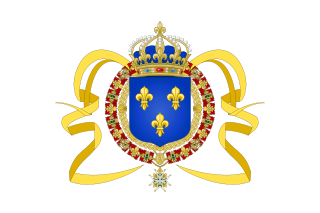
Saint-Domingue was a French colony in the western portion of the Caribbean island of Hispaniola, in the area of modern-day Haiti, from 1697 to 1804. The name derives from the Spanish main city on the island, Santo Domingo, which came to refer specifically to the Spanish-held Captaincy General of Santo Domingo, now the Dominican Republic. The borders between the two were fluid and changed over time until they were finally solidified in the Dominican War of Independence in 1844.
The music of Louisiana can be divided into three general regions: rural south Louisiana, home to Creole Zydeco and Old French, New Orleans, and north Louisiana. The region in and around Greater New Orleans has a unique musical heritage tied to Dixieland jazz, blues, and Afro-Caribbean rhythms. The music of the northern portion of the state starting at Baton Rouge and reaching Shreveport has similarities to that of the rest of the US South.

Acadiana, also known as Cajun Country, is the official name given to the French Louisiana region that has historically contained much of the state's Francophone population.

Mardi Gras Indians are African American carnival revelers in New Orleans, Louisiana, who dress up for Mardi Gras in suits influenced by the cultural practices of Native Americans, West Africans, and Afro-Caribbeans. The music, dance, and regalia from these cultures created the Mardi Gras Indian tradition during the era of slavery in Louisiana that continues today. This cultural tradition is a part of the African and African diaspora decorative aesthetic, and is an African-American art form. Black masking Indians are a subculture in New Orleans.

In the context of the history of slavery in the Americas, free people of color were primarily people of mixed African, European, and Native American descent who were not enslaved. However, the term also applied to people born free who were primarily of black African descent with little mixture. They were a distinct group of free people of color in the French colonies, including Louisiana and in settlements on Caribbean islands, such as Saint-Domingue (Haiti), St. Lucia, Dominica, Guadeloupe, and Martinique. In these territories and major cities, particularly New Orleans, and those cities held by the Spanish, a substantial third class of primarily mixed-race, free people developed. These colonial societies classified mixed-race people in a variety of ways, generally related to visible features and to the proportion of African ancestry. Racial classifications were numerous in Latin America.

Randall Lee Gibson was an American attorney and politician, elected as a member of the House of Representatives and U.S. Senator from Louisiana. He served as a brigadier general in the Confederate States Army. Later he was a regent of the Smithsonian Institution, and a president of the board of administrators of Tulane University.

Ota Benga was a Mbuti man, known for being featured in an exhibit at the 1904 Louisiana Purchase Exposition in St. Louis, Missouri, and as a human zoo exhibit in 1906 at the Bronx Zoo. Benga had been purchased from native African slave traders by the explorer Samuel Phillips Verner, a businessman searching for African people for the exhibition, who took him to the United States. While at the Bronx Zoo, Benga was allowed to walk the grounds before and after he was exhibited in the zoo's Monkey House. Benga was placed in a cage with an orangutan, regarded as both an offense to his humanity and a promotion of social Darwinism.
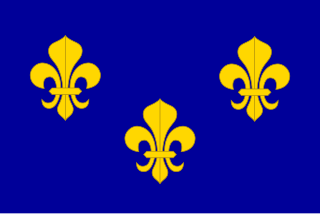
Louisiana or French Louisiana was an administrative district of New France. In 1682 the French explorer René-Robert Cavelier, Sieur de la Salle erected a cross near the mouth of the Mississippi River and claimed the whole of the drainage basin of the Mississippi River in the name of King Louis XIV, naming it "Louisiana". This land area stretched from the Great Lakes to the Gulf of Mexico and from the Appalachian Mountains to the Rocky Mountains. The area was under French control from 1682 to 1762 and in part from 1801 (nominally) to 1803.

Donald Harrison Jr. is an African-American jazz saxophonist and the Big Chief of The Congo Square Nation Afro-New Orleans Cultural Group from New Orleans, Louisiana.
Plaçage was a recognized extralegal system in French and Spanish slave colonies of North America by which ethnic European men entered into civil unions with non-Europeans of African, Native American and mixed-race descent. The term comes from the French placer meaning "to place with". The women were not legally recognized as wives but were known as placées; their relationships were recognized among the free people of color as mariages de la main gauche or left-handed marriages. They became institutionalized with contracts or negotiations that settled property on the woman and her children and, in some cases, gave them freedom if they were enslaved. The system flourished throughout the French and Spanish colonial periods, reaching its zenith during the latter, between 1769 and 1803.

Louisiana Creoles are a Louisiana French ethnic group descended from the inhabitants of colonial Louisiana before it became a part of the United States during the period of both French and Spanish rule. They share cultural ties such as the traditional use of the French, Spanish, and Creole languages and predominant practice of Catholicism.
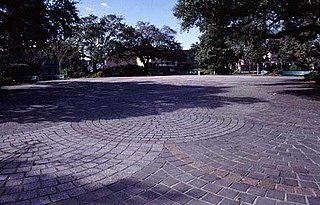
Congo Square is an open space, now within Louis Armstrong Park, which is located in the Tremé neighborhood of New Orleans, Louisiana, just across Rampart Street north of the French Quarter. The square is famous for its influence on the history of African American music, especially jazz.

The term Creole music is used to refer to two distinct musical traditions: art songs adapted from 19th-century vernacular music; or the vernacular traditions of Louisiana Creole people which have persisted as 20th- and 21st-century la la and zydeco in addition to influencing Cajun music.
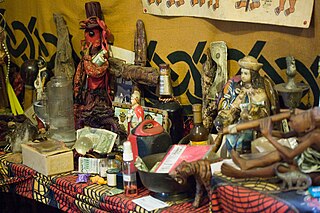
Louisiana Voodoo, also known as New Orleans Voodoo, is an African diasporic religion and magic tradition that originated in Louisiana. It arose through a process of syncretism between the traditional religions of West Africa, the Roman Catholic form of Christianity, and Haitian Vodou. No central authority is in control of Louisiana Voodoo, which is organized through autonomous groups.

Jean Saint Malo in French, also known as Juan San Maló in Spanish, was the leader of a group of runaway enslaved Africans, known as Maroons, in Spanish Louisiana.
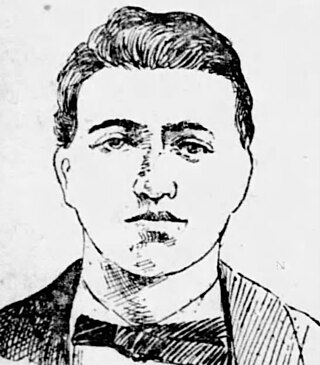
Mike McCoole, sometimes spelled McCool, was an Irish-born bare-knuckle boxing champion who came to America at the age of thirteen. He claimed the Heavyweight Championship of America in 1866 by defeating boxer Bill Davis after former champion Joe Coburn retired, and lost the title to Tom Allen in 1873.

African Americans in Louisiana or Black Louisianians are residents of the US state of Louisiana who are of African ancestry; those native to the state since colonial times descend from the many African slaves working on indigo and sugarcane plantations under French colonial rule.

The French Louisianians, also known as Louisiana French, are Latin French people native to the states that were established out of French Louisiana. They are commonly referred to as French Creoles. Today, the most famous Louisiana French groups are the Alabama Creoles, Louisiana Creoles, and the Missouri French.
References
- 1 2 3 4 5 6 Dawdy, Shannon Lee. "The Burden of Louis Congo and the Evolution of Savagery in Colonial Louisiana." Discipline and the other body: correction, corporeality, colonialism. Edited by Steven Pierce & Anupama Rao. Duke University Press, 2006. pp 61–89.
- 1 2 3 4 5 Sublette, Ned. The world that made New Orleans: from Spanish silver to Congo Square. Chicago Review Press, 2008.
- ↑ Spear, Jennifer M. Race, sex, and social order in early New Orleans. JHU Press, 2009.
- 1 2 Hall, Gwendolyn Midlo. Africans in colonial Louisiana: the development of Afro-Creole culture in the eighteenth century. LSU Press, 1995.